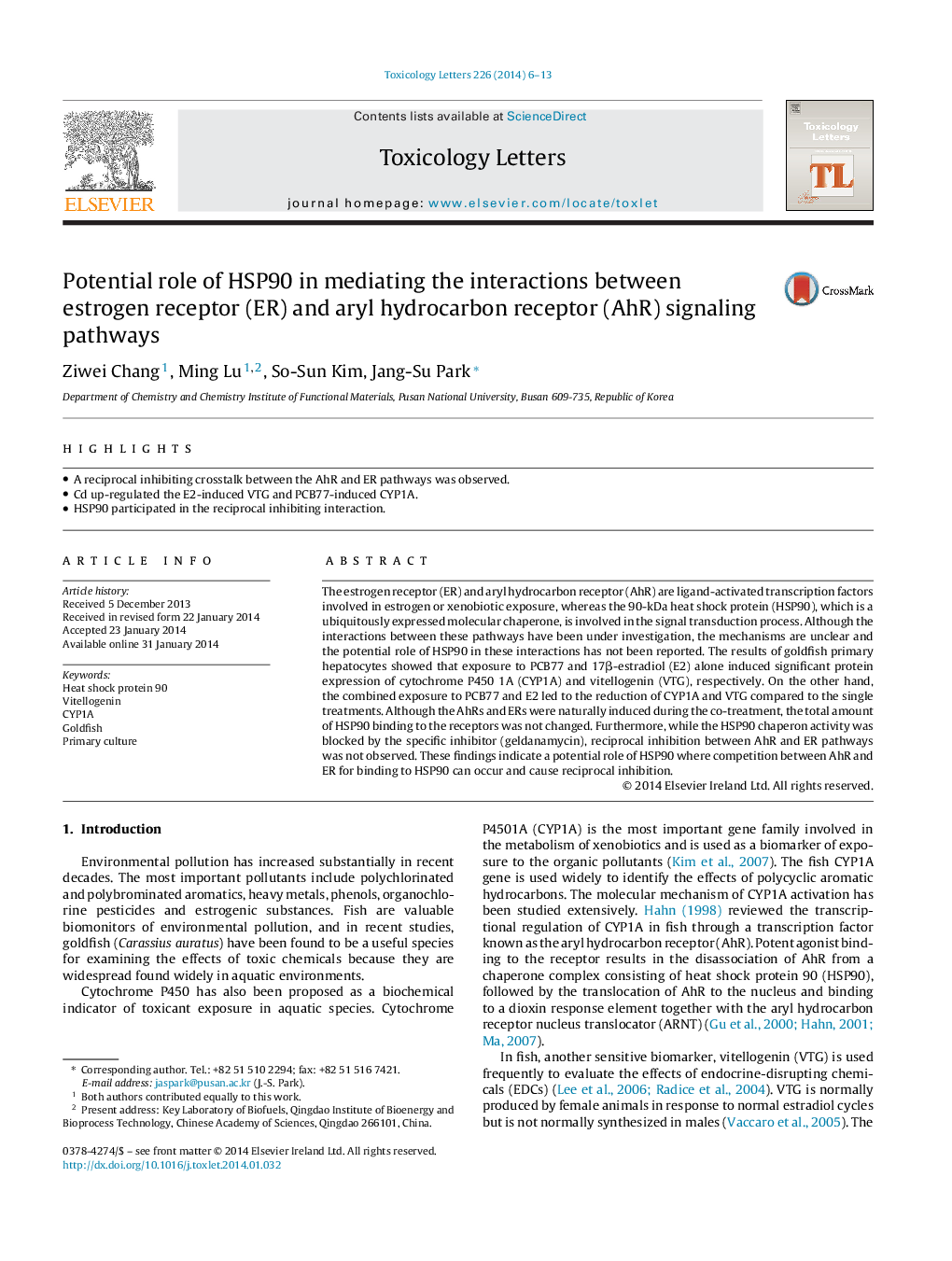| کد مقاله | کد نشریه | سال انتشار | مقاله انگلیسی | نسخه تمام متن |
|---|---|---|---|---|
| 2599055 | 1133176 | 2014 | 8 صفحه PDF | دانلود رایگان |

• A reciprocal inhibiting crosstalk between the AhR and ER pathways was observed.
• Cd up-regulated the E2-induced VTG and PCB77-induced CYP1A.
• HSP90 participated in the reciprocal inhibiting interaction.
The estrogen receptor (ER) and aryl hydrocarbon receptor (AhR) are ligand-activated transcription factors involved in estrogen or xenobiotic exposure, whereas the 90-kDa heat shock protein (HSP90), which is a ubiquitously expressed molecular chaperone, is involved in the signal transduction process. Although the interactions between these pathways have been under investigation, the mechanisms are unclear and the potential role of HSP90 in these interactions has not been reported. The results of goldfish primary hepatocytes showed that exposure to PCB77 and 17β-estradiol (E2) alone induced significant protein expression of cytochrome P450 1A (CYP1A) and vitellogenin (VTG), respectively. On the other hand, the combined exposure to PCB77 and E2 led to the reduction of CYP1A and VTG compared to the single treatments. Although the AhRs and ERs were naturally induced during the co-treatment, the total amount of HSP90 binding to the receptors was not changed. Furthermore, while the HSP90 chaperon activity was blocked by the specific inhibitor (geldanamycin), reciprocal inhibition between AhR and ER pathways was not observed. These findings indicate a potential role of HSP90 where competition between AhR and ER for binding to HSP90 can occur and cause reciprocal inhibition.
Journal: Toxicology Letters - Volume 226, Issue 1, 7 April 2014, Pages 6–13